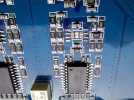Hmm...
That "boxed in sound" of the OPA1612's and low bass is now explained.
Uh huh.
So much for them being state of the art tech (as in their literature), with a transparent sound as touted at the time by all the so called audio pundits.
Where has it been demonstrated by anyone to not be transparent? You certainly haven't. You are just telling anecdotal stories.
